A word from the directors
When we first started thinking about “Mystery League,” we had no idea that we would be working with the best film crew in Arkansas. We also had no idea we would be working with amazing filmmakers from around the country. We also, also had no idea that we would be working with an amazingly talented cast who would perfectly fit our vision for the show.
What we’re trying to say is that we couldn’t have predicted the future, of course. But, things certainly came together better than we ever could have imagined. We were so very lucky in so many aspects of the production of the show.
Having said that, here’s all the things that went wrong. (Kidding.)
Who goes there?
Eric: Through Arkansas PBS, I’ve spent a lot of time working on children's content. With “Rise and Shine,” Arkansas AMI, and the narrative puppet show called “Blueberry’s Clubhouse,” which is very much a labor of love for everyone here at the station. So, we really had a great sandbox to play in with acting, visual storytelling and honing a sense of wonder and humor. This show really helped us get our footing set in children's television, and it really kind of got the ball rolling for us to work on “Mystery League.”
Terrell: Most productions I’ve worked on in my career have been small or micro budget. Going into “Mystery League,” I knew that collaboration would be key to making it great. Luckily, we had some amazing filmmakers to collaborate with. Eric and I split up the scripts to breakdown with a list of shots and other notes for the actors’ motivation, etc. Our breakdowns would not always translate to the parameters of our locations, and we would have to adjust and be flexible. Thankfully, we could draw from the knowledge and imagination of our creative team.
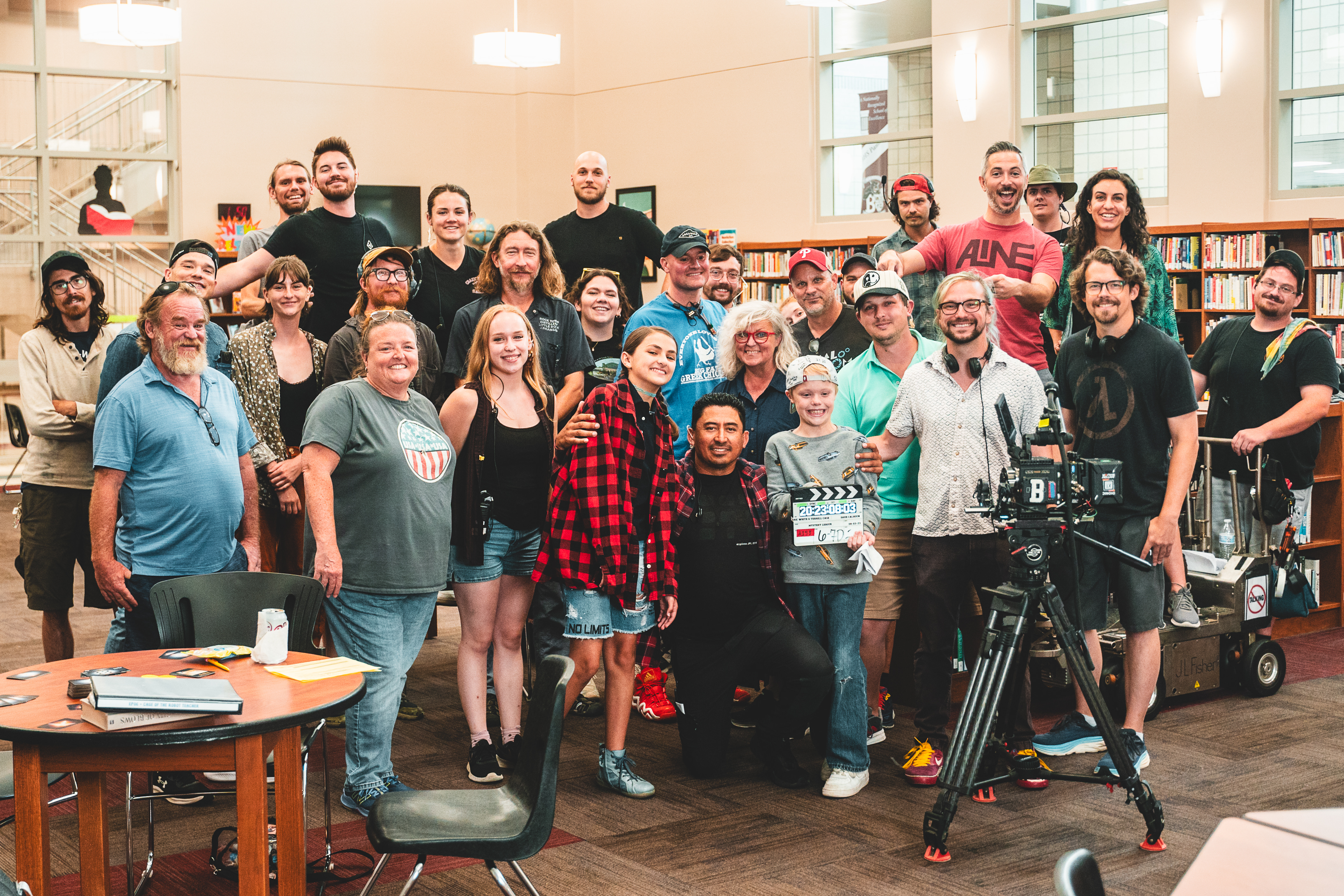
Pre-Production: In the Beginning …
Eric: Pre-production is the phase where you are battening down the hatches for the storm, i.e. production. Everything is written at that point (or at least being rewritten), and you are going into early stages of production design, casting, costumes and sets, and all that sort of stuff. Directing at this stage is just making lots of decisions and trusting all your crew.
Terrell: Our vision for “Mystery League” was inspired by ’90s Nickelodeon shows. Eric and I are millennials, so we drew from when we were kids. Several other crew members were millennials and Gen Z, and that colorful ’90s vibe seemed to resonate with them as well. From the wardrobe to the production design, we wanted that bold, colorful look of the ’90s.
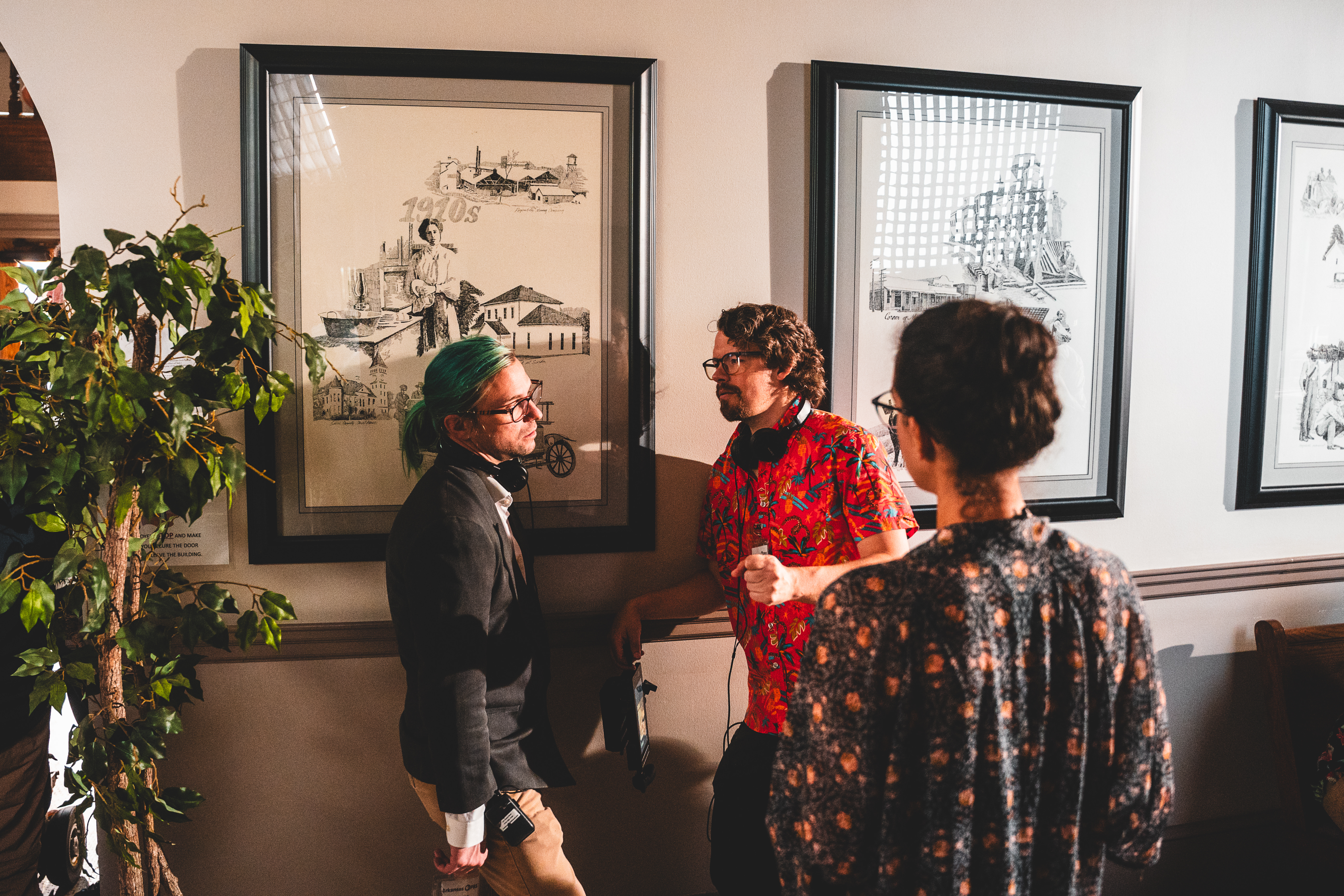
Eric: For the casting process, we had young actors from all over the United States submitting auditions, and they were all really phenomenal. It was hard to really pick once we got to the end. But, we were on a timetable, we had set a start date at this point, and it was approaching fast. So, it really came down to getting all our actors onto a Zoom and seeing their chemistry together. And, it was kind of magical. Like once we got our three main kids into one Zoom session, and they started talking and playing off each other, they seemed like they were having fun, and I think it pays off in the show itself.
Terrell: The challenge in producing any edutainment is, of course, making the educational content entertaining. PBS has many shows that have had success with this concept, like “Sesame Street” and “Mister Rogers’ Neighborhood.” With “Mystery League,” we knew after a few stories were broken in the writers’ room that this would be a story-driven show where our protagonists solve mysteries. So, our goal was to tell an engaging story where you want to know how it ends, and the educational lessons you learn along the way contribute to the story or to the character development.
Eric: Preproduction is arduous for me. Before you go on a film shoot – narrative or documentary – you always get a little nervous in your stomach. You're always thinking about all the things that could go wrong. So, preproduction — to me — is a month of just thinking about everything that could go wrong. Day in, day out, for weeks and months, with really nothing that can be done, but think of contingencies when something terrible does happen. It just makes me a nervous wreck. But, you have to worry to win, and hopefully with enough luck, all this fretting will pay off in the next phase …
Production: The Big Show
Eric: Basically the production is filming. Capturing all the sounds and visuals that you can in the time allotted. Our job was working with the actors and blocking scenes. Blocking is sorta like choreography, figuring out how characters move in and out of scenes, and where they stop, which is called a mark. And, then working with the director of photography on capturing this in the most dynamic way possible. There are many, many other tasks that pop up, but this happens day in and day out.
Most of the time, you arrive to set, and there are already several problems that have to be mitigated. But, I will say, this is my favorite part of the whole process. I love the active problem solving that comes with being on set, like when a prop breaks or a location falls through, the critical thinking on your feet that has to happen in order for the whole production to keep moving.
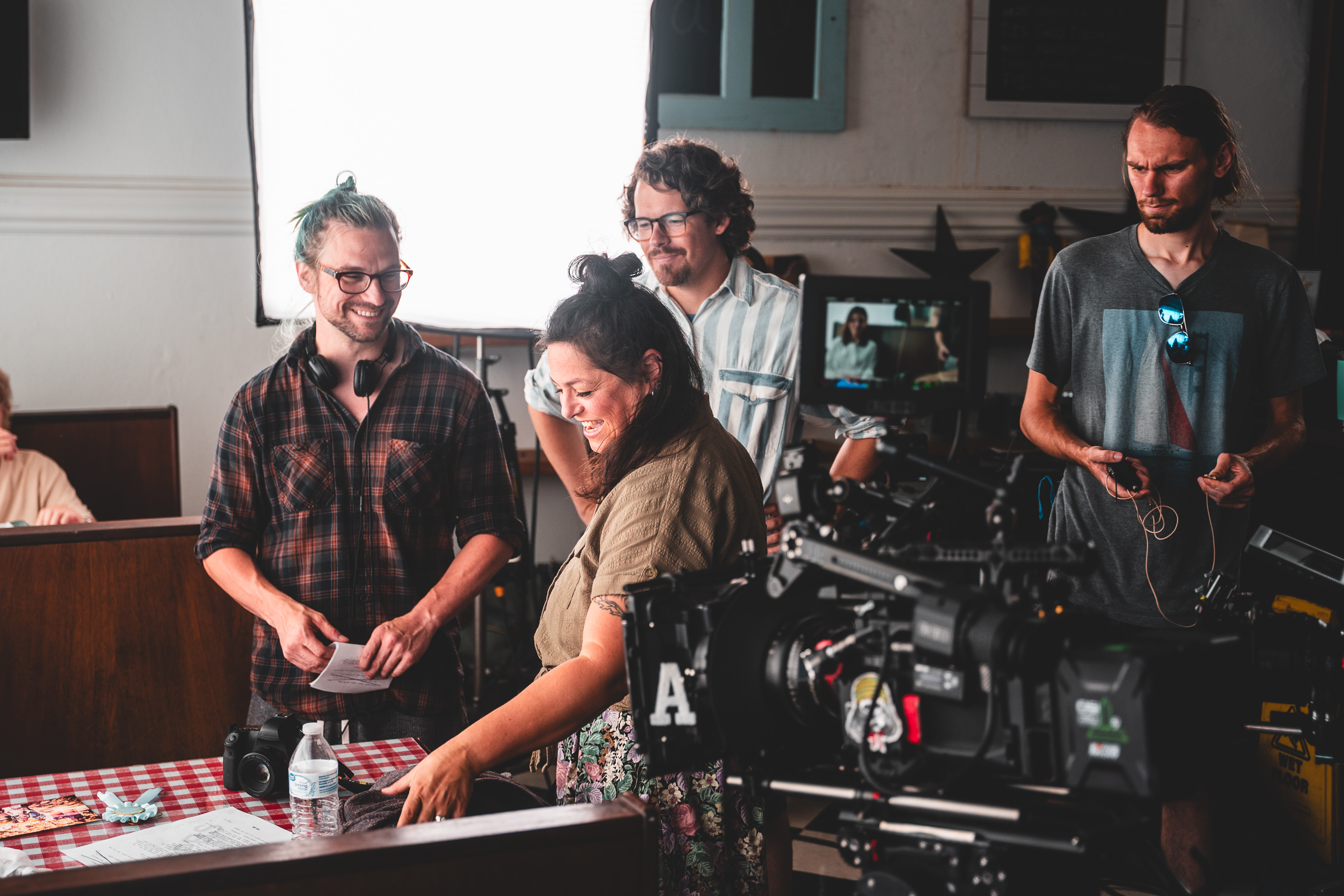
A Challenger Approaches …
Terrell: Even with a long 55-day shooting schedule, we still needed two cameras to make it all happen. Sometimes it wasn’t possible to run two cameras at once in a scene. When we did roll both cameras, it could be hard to monitor two shots at once. Usually there were two different angles of two or more characters. Just keeping track of everything could be a challenge. Luckily, Eric was there as well as our attentive script supervisor.
The Arkansas summer weather also presented several challenges. The usual one was the overbearing heat. The unusual one was the amount of rain we had. Even so, we never had to lose a day for rain. One of the luckiest days was when we shot in front of the Saline County courthouse with dozens of actors attending a ceremony. The forecast was rain. The rain never came, and it was the most pleasant day of the summer, featuring a refreshing breeze. Fast forward to day 55, we were filming in a cornfield, and it was 10 degrees hotter than outside the cornfield. It was our last day, and we were filming into the night with cooler temps only to be greeted by the neighbors: hundreds of mosquitoes. It was still an amazing experience.
Eric: We had this beautiful creek location that had easy access for a crew to get down there, and a place where we could have a base camp for actors. Wonderful location. But, around 11 a.m. every day, the river just started rising because it was part of the Ouachita River Lock and Dam. They would release the floodgates, and then over the course of the next few hours, the water would just slowly rise till the bank you were filming on was completely engulfed in water.
So, basically, the clock is always ticking. Everyone is in a rush to get lights placed and the camera set and everything in place for actors to arrive. Block it to shoot it. But, if someone busts a line, or a plane flies over, and now you have to reset and do it again, you've lost 5 minutes, 20 minutes, an hour. And, all this time the water is just always going to be inching higher and higher. That's how it feels to be on a production at any point, the clock is always ticking, and the water is always rising.
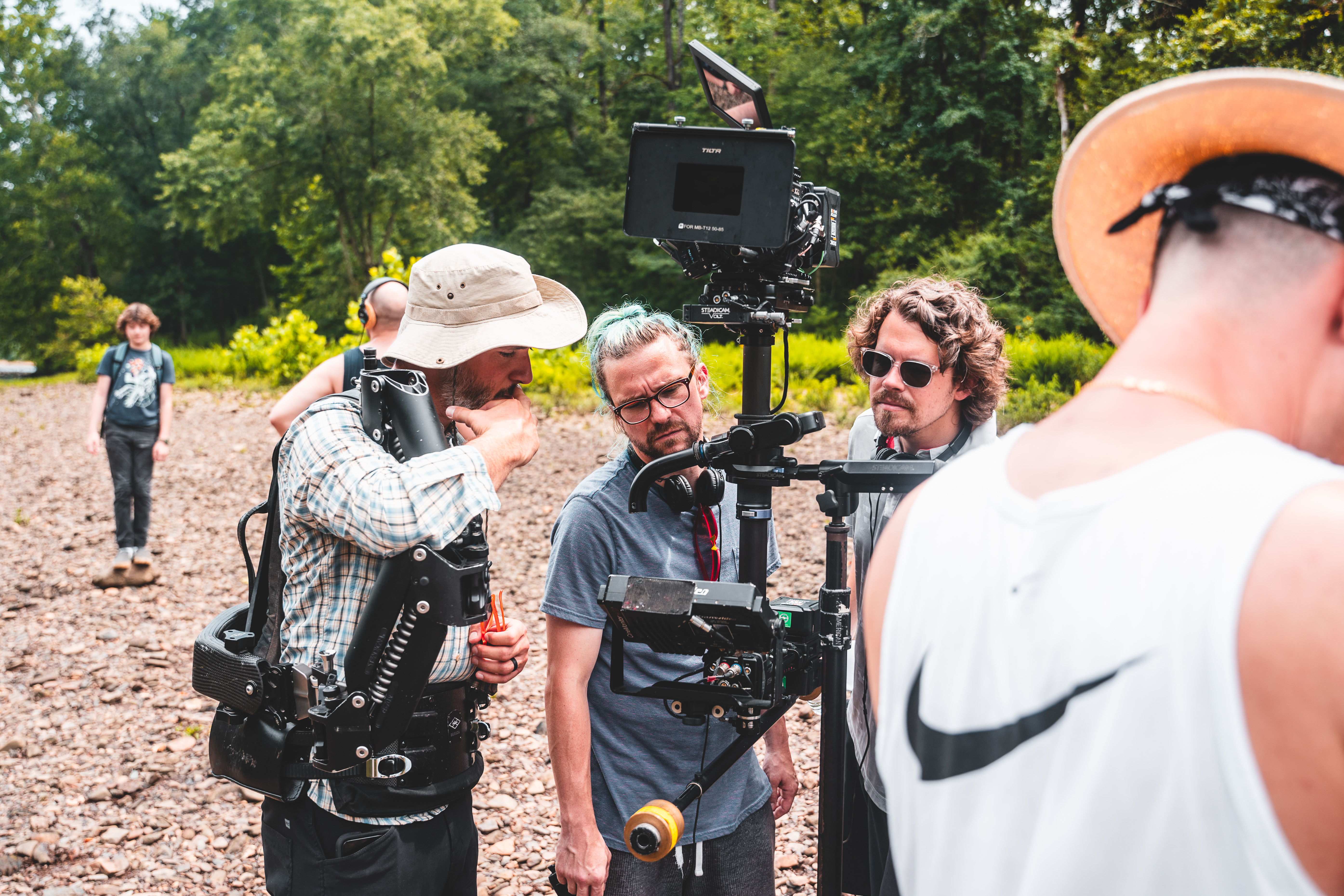
Terrell: One thing that wasn’t as challenging as expected was working with all the talented young actors of the show. They brought so much enthusiasm and creative energy. Even our young extras were so committed and engaged in the production process. It allowed us to be able to establish the laidback and fun environment that we wanted. These kids dedicated so much time to this show, and we wanted them to enjoy it!
Post- Production: Mashing it All Together
Eric: Post-production is the phase when you take everything you did in production – all those sounds and visuals and images – and you just mash them all together on an editing timeline. You hope it all makes sense and works. And, most of the time it does, because you've spent all the time in pre-production, preparing for the production (big sigh of relief). And, when it works it may be the best feeling in the world.
This phase can be just as meticulous as the preproduction part, lots of boxes to check before it’s complete and up on TV. Especially if you're working with outside editors, sound designers and colorists, and all that sort of stuff. The perfectionist in me wants to touch everything; like I want to be able to act like I can do it all, but physically no one can do it all. That's why you rely on other people. It's a collaborative art.
Terrell: All that hard work finally paid off for our team at Arkansas PBS when we were all able to watch the final product with an audience. This show was made for kids. At the screenings, we saw (and heard) kids enjoying the show and engaging in the Q&A sessions at the screenings. This made it all worth it. Thanks, kids. Keep watching, please!
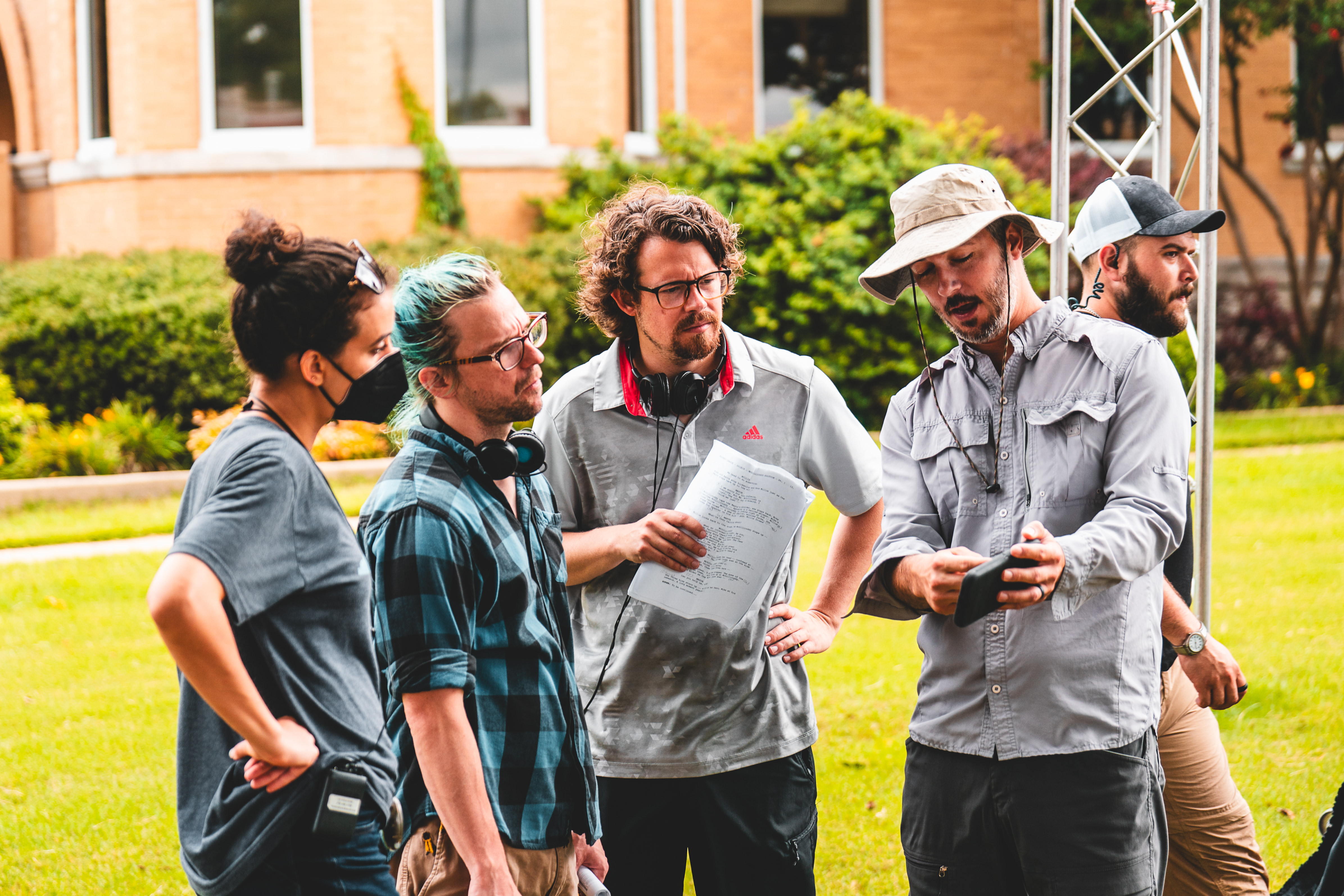
Next Episode …
Eric: Currently, we're finishing up the six episodes that are left within this season in a bit of a mad dash to the finish.
And then, we are diving headlong into a documentary. It’s a little weird to move from “Mystery League,” which is a very light and fun narrative show, into a long form documentary about canoes in Alaska. So, we really will have to shift gears a bit, but I hope to bring some of the creative energies that I've put to use in “Mystery League” into this new project.

